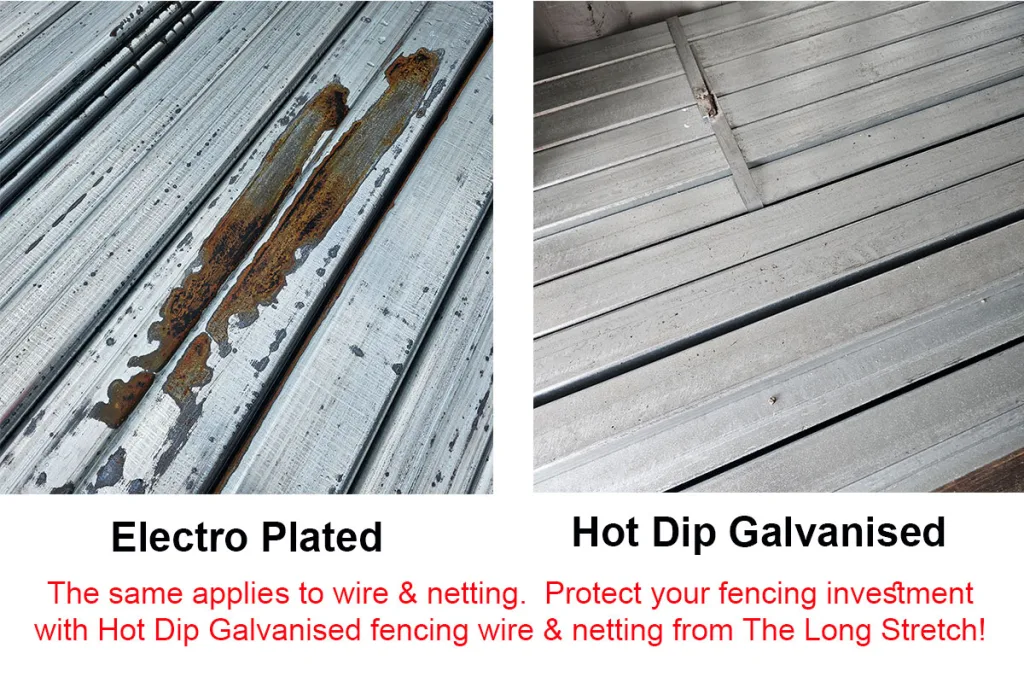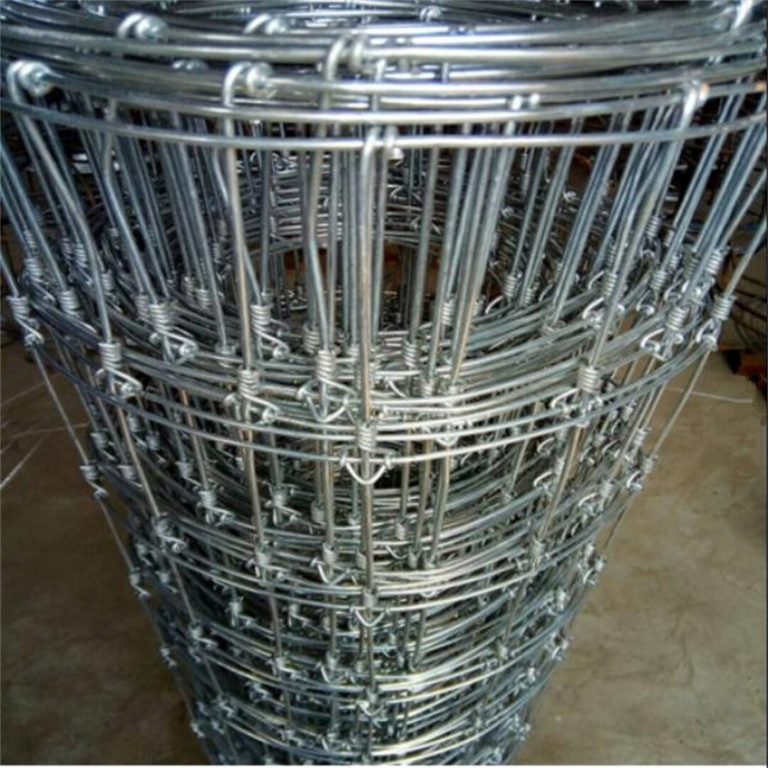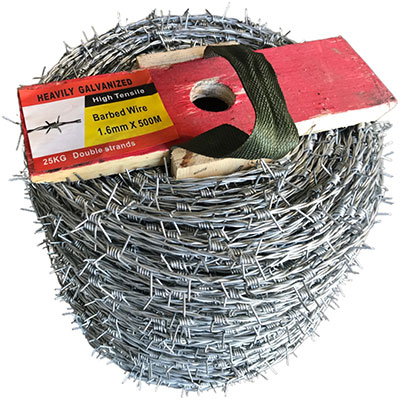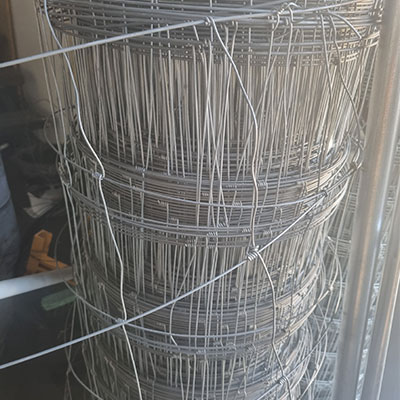
Zinc Plating vs. Hot-Dip Galvanising: Which Is Better?
Both zinc plating and hot-dip galvanising are methods of applying a protective zinc coating to steel to prevent corrosion. However, the way the zinc is applied—and the resulting performance—differs significantly between the two.
Zinc Plating (Electroplating)
Process:
Zinc plating is done through electrochemical deposition, where a thin layer of zinc is applied to the steel surface using an electric current in a zinc salt solution.
Advantages:
- Smooth finish: Bright, uniform, and attractive for decorative or indoor use.
- Precise coating thickness: Ideal for parts with tight tolerances.
- Lower initial cost per item: Good for small, low-stress components.
Disadvantages:
- Thin coating (5–30 g/m²): Minimal corrosion protection outdoors.
- Poor bushfire resistance: Thin zinc layer offers little thermal insulation.
- Short lifespan in outdoor/rural use: Coating breaks down quickly in moisture, salt, or manure.
- Not suitable for structural or heavy-duty applications.
Bushfire Impact:
Zinc plating offers minimal protection in bushfires. The thin coating will vaporise or break down under intense heat, leaving the steel exposed to rust and structural failure.
Longevity:
Typically 1–3 years outdoors in moderate environments, much less in coastal, acidic, or high-rainfall areas.
Workability:
- Easier to machine or form due to thinner coating.
- However, coating can crack or flake during bending or welding.
Hot-Dip Galvanising
Process:
Hot-dip galvanising involves immersing steel in molten zinc, forming a thick, metallurgically bonded coating that covers all surfaces—including edges, welds, and internal cavities.
Advantages:
- Thick zinc coating (40–600 g/m²): Outstanding rust and corrosion resistance.
- Durable and hard-wearing: Withstands physical impact, animal pressure, and extreme weather.
- Excellent fire resistance: Steel remains structurally sound in bushfires; zinc doesn’t ignite or melt easily.
- Ideal for structural and outdoor use: Long lifespan in all Australian conditions.
Disadvantages:
- Rougher surface finish: Not suited for decorative indoor use.
- Higher upfront cost per item: But offset by much lower maintenance costs.
- Slightly reduced precision in tight tolerances: Not ideal for small mechanical parts.
Bushfire Impact:
Hot-dip galvanised steel performs exceptionally well in bushfires. The zinc coating acts as a heat shield and doesn’t degrade quickly, helping maintain the structure’s integrity under high temperatures.
Longevity:
Can last 20–50 years outdoors, even longer in dry inland regions. Coastal and high-moisture areas typically see 15–25 years with minimal maintenance.
Workability:
- Tougher to machine or weld (unless welding is done before galvanising).
- May require coating touch-up after cutting or drilling.
Summary Comparison Table
| Feature | Zinc Plating | Hot-Dip Galvanising |
|---|---|---|
| Coating Thickness | 5–30 g/m² | 40–600 g/m² |
| Corrosion Resistance | Low | Excellent |
| Lifespan (Outdoors) | 1–3 years | 20–50 years |
| Fire Resistance | Poor | High |
| Cost (initial) | Lower | Higher |
| Maintenance Needs | High | Low |
| Best Use Cases | Indoor, decorative parts | Rural fencing, stock yards, gates, infrastructure |
| Surface Finish | Smooth, shiny | Matte, industrial |
| Workability | High (but coating flakes easily) | Medium (pre-weld preferred) |
Final Verdict for Rural Applications
For Australian farms, stations, and outdoor infrastructure exposed to weather, livestock, and bushfires, hot-dip galvanising is vastly superior. While zinc plating may be appropriate for light-duty indoor components, it simply can’t match the durability and lifespan of hot-dipped steel in real-world farm environments.






